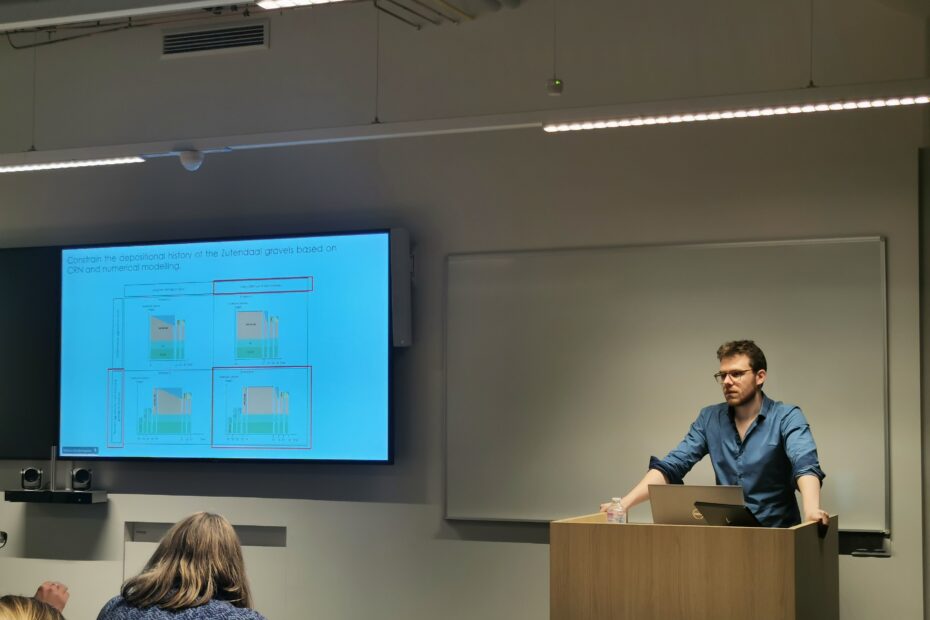On the 20th of December 2022, Nathan Vandermaelen publicly defended his PhD thesis entitled: “Further development in cosmogenic radionuclide applications in complex depositional environments : Middle Pleistocene deposits of the Meuse, NE Belgium”.
Summary
Cosmogenic radionuclides accumulate at the Earth’ surface as a function of time and depth. They can be used to constrain the age and the deposition mode of fluvial deposits.
Occupied by the braided channels of the Meuse during the Middle Pleistocene, the (eastern) Campine plateau resisted the overall erosion that affected the Campine area, and nowadays stands out of its environment.
In this study, we applied cosmogenic radionuclides on the eastern Campine plateau to constrain its depositional and post-depositional history. Main results show that the deposition occurred in different phases, interrupted by thousands of years long hiatuses that correspond to climatic fluctuations.
These first numerical ages of the eastern Campine plateau could be used in the future to better constrain the geomorphological evolution of the Campine region and the European Lowlands in general.
